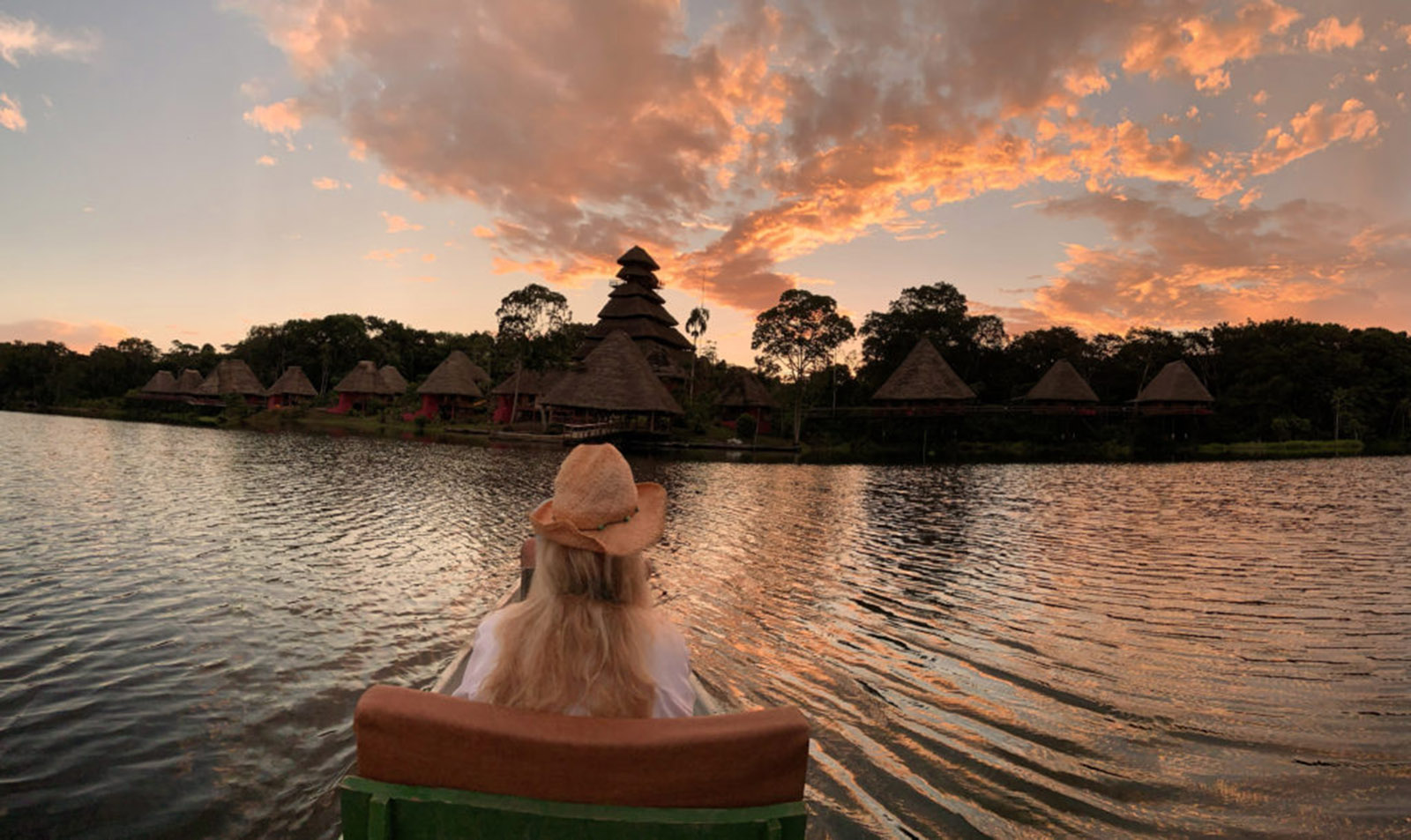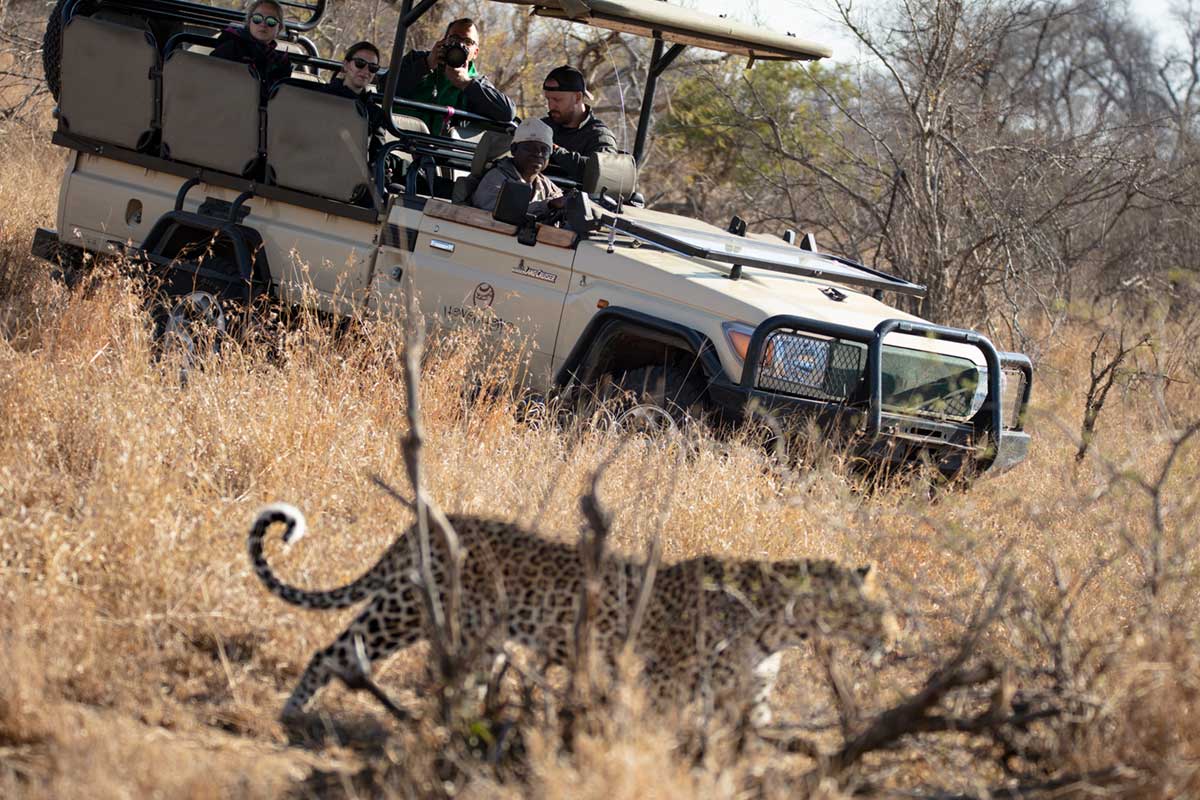
Going on Safari in Africa
“There is something about safari life that makes you forget all your sorrows and feel as if you had drunk half a bottle of champagne — bubbling over with heartfelt gratitude for being alive.”
Karen Blixen (Author of “Out of Africa”)
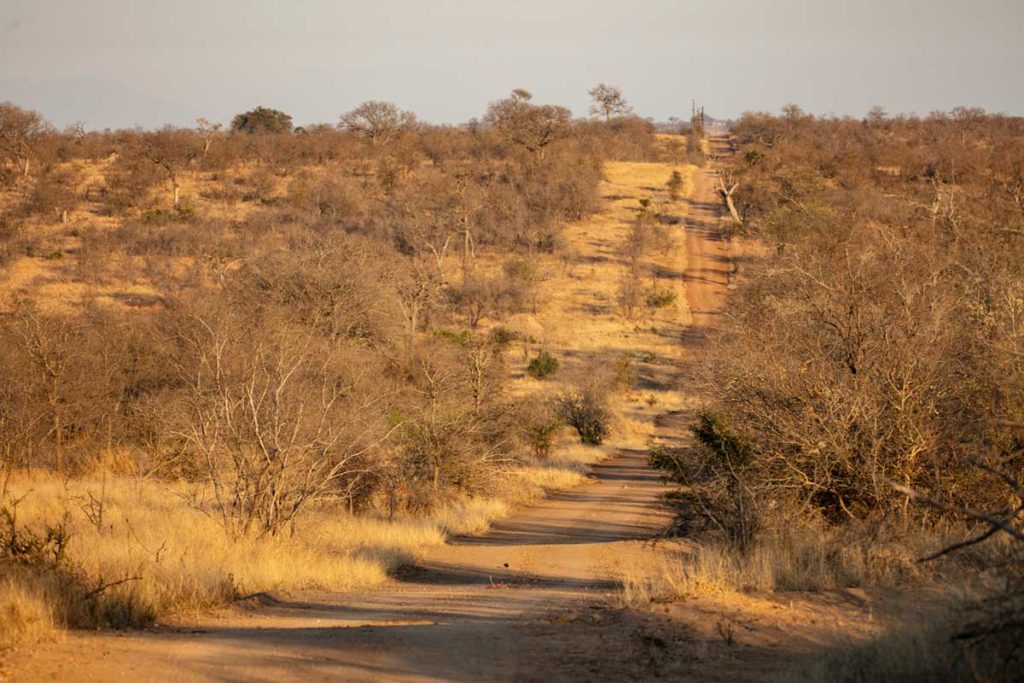
A dirt road through Kruger National Park in dry season.
As we made our way along the dusty dirt road to Orpen Gate at Kruger National Park, with cell phone connectivity fading in and out, it felt as though we were entering Jurassic Park. I could almost hear the music while driving into this mysterious place, where the big 5 – lions, leopards, elephants, water buffalo and rhinos – could appear at any moment. It had been a long drive all the way east from Johannesburg, starting off on major highways and ending up in remote villages. As we headed to our safari lodge, still a surprisingly long distance past the gates as Kruger is the size of a small country, we saw 3 of the infamous big 5 just driving in.
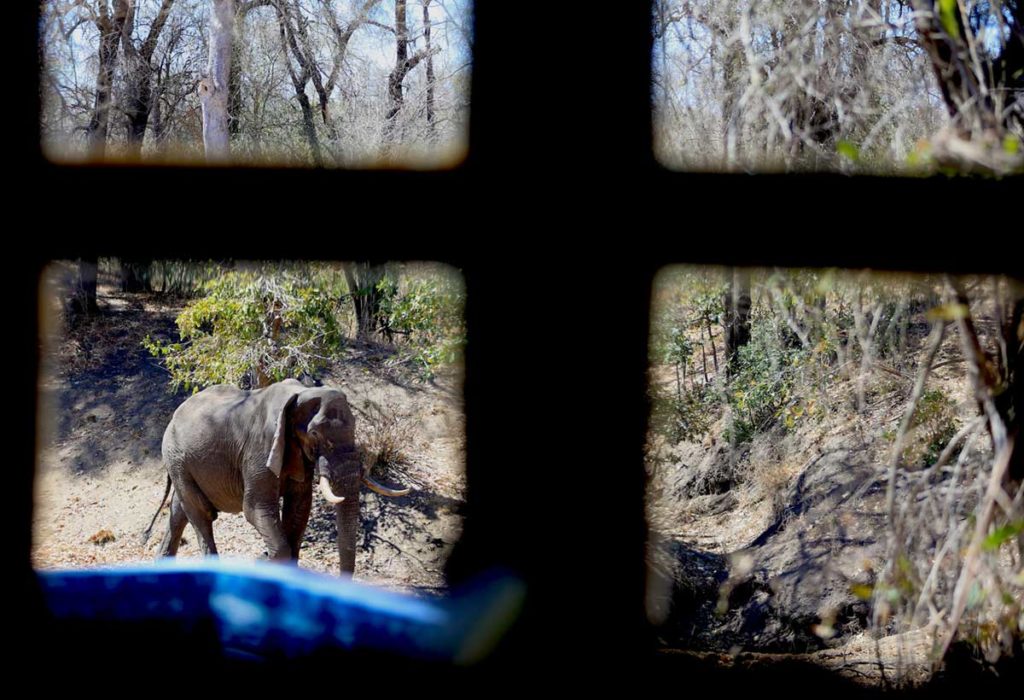
Elephant walking by our window in the dry river bed at Imbali Safari Lodge
Once at Imbali, our lodge of choice, we experienced that interesting combination of luxurious furnishings, impeccable service and wild, remote territory. Our room felt like something out of a Hemingway novel decorated with dark woods, animal prints and shear white mosquito netting. We had a patio with a small plunge pool overlooking a dry river bed. One afternoon I awoke from a nap to see an elephant walking by in it. The lack of internet in the room had me reaching for a leather bound journal instead of my cell phone social media app and though it felt dated to me it also felt right.

Baboon “lookout” who climbed the tree and was watching us through the window.
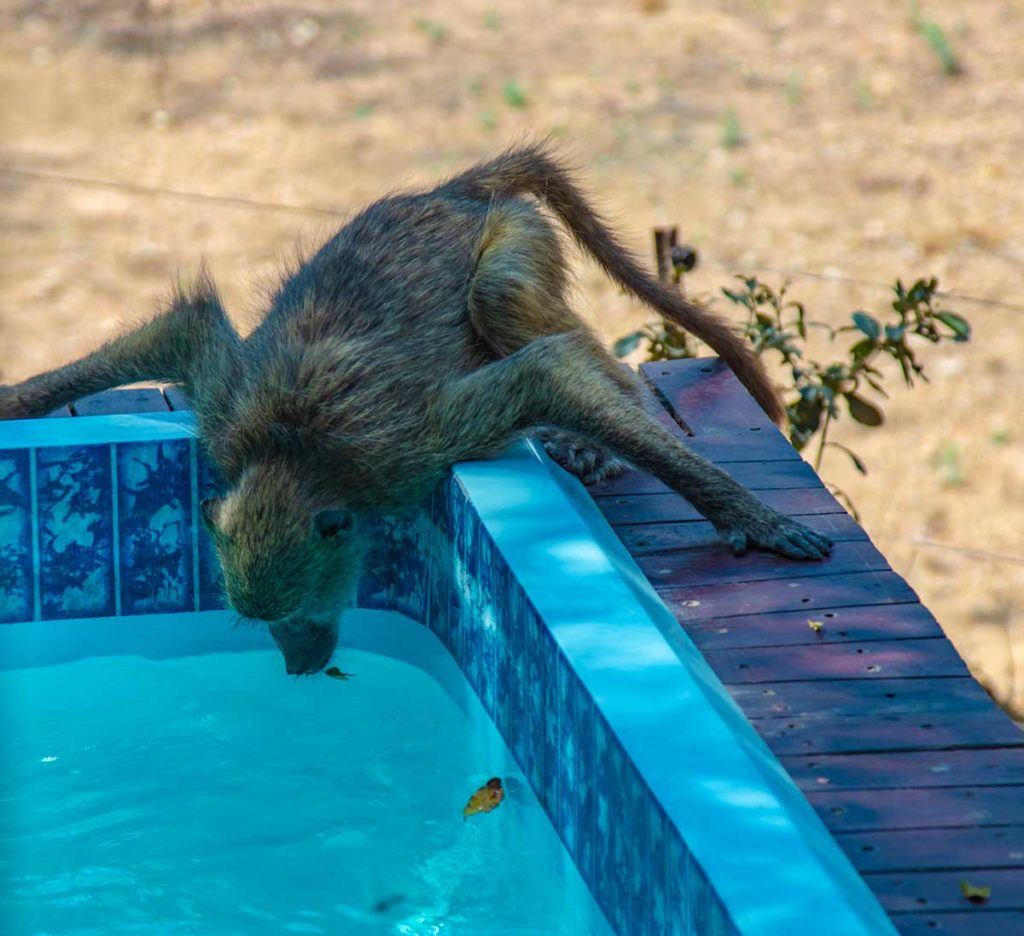
Baboon taking a drink from the pool on our patio at Imbali Safari Lodge
The lodge was home to many baboons and it wasn’t until the third day that they found our villa. I glanced out the window to see one which had climbed a tree and was staring in the window at me. It was motioning to the others already on the patio just out of my sight and it became clear that he was the lookout. My husband was in the shower which had a floor to ceiling window in it, overlooking the dry river bed. He turned around after feeling that someone was there to see a very large baboon staring in the window at him, watching him shower. Some were drinking from the pool while a less inhibited pair were having sex in the middle of the patio. While some at the lodge consider them a nuisance they put on such a show that we probably would have paid extra for it. They were skittish enough that if you moved quickly they ran away.
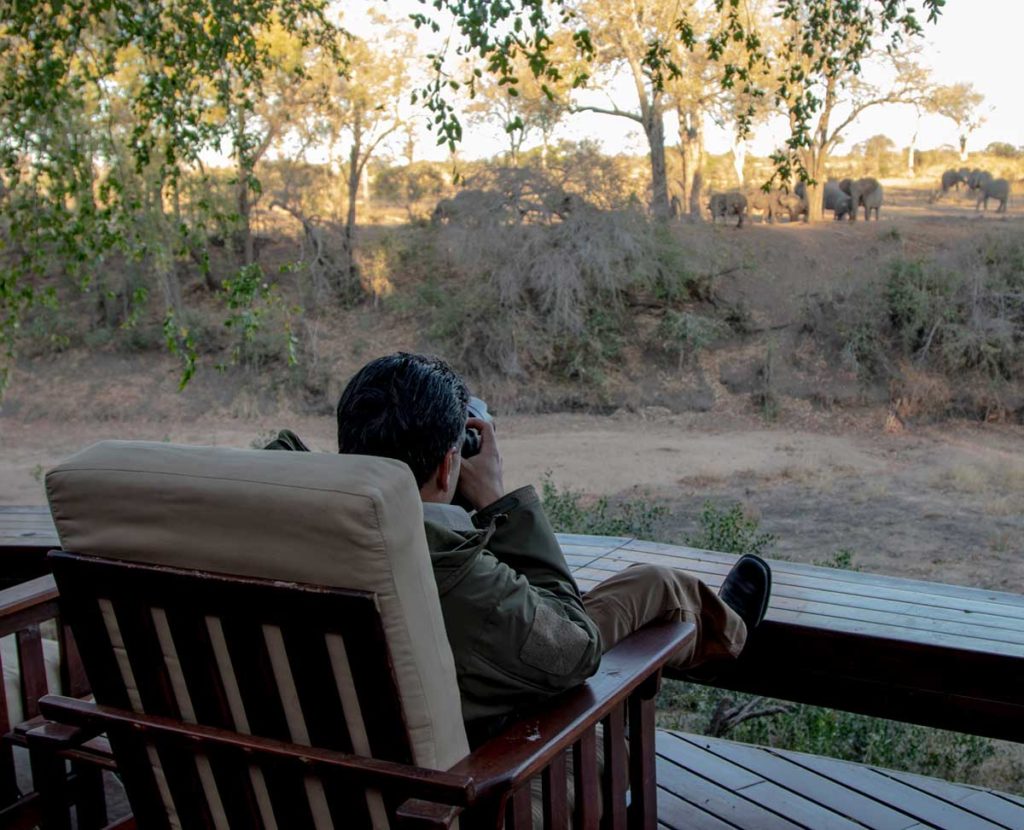
Tim, watching elephants at the watering hole across the dry river bed from the lodge.

Sitting room in the main lodge at Imbali Safari Lodge, Kruger National Park

Eating area on the patio of the main lodge at Imbali, Kruger National Park
There was a watering hole across the river bed from the main lodge which attracted all kinds of wildlife and let you watch them interact, day and night. It was better than television and made you feel like a wildlife researcher on assignment, studying animal behavior. Elephants, water buffalo, wart hogs, impala and even lions could show up. The watering hole was fed by reclaimed water from the rooms.
We were warned not to walk to our room by ourselves after dark, as lions and leopards had been known to roam the camp. Even when you walked to the main lodge in the middle of the day you were on alert. I was always looking around, often surprised by sounds bursting out from the bush and a gazelle like creature suddenly running across our path. A gazelle was not the first animal you thought was coming and it was not until you confirmed it that your pulse returned to normal.
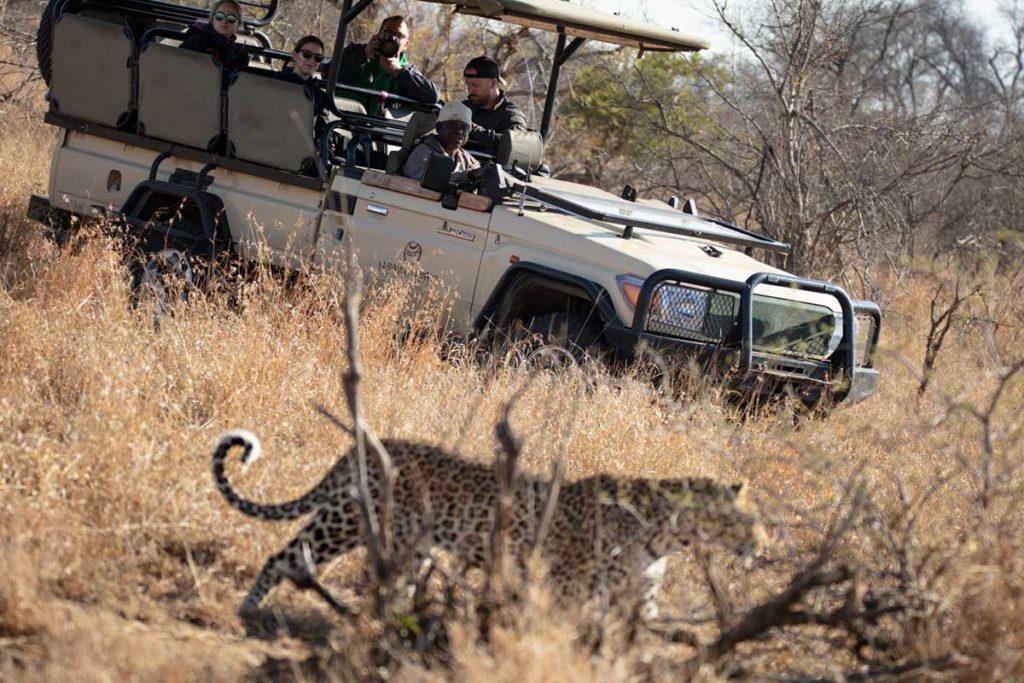
Following a leopard on a game drive.

Diann, taking photos on safari.
Safari lodges vary in Africa from humble camps to high end resorts. Lodges are pricey because they are all inclusive – including meals, drinks and game drives. Most include 2 game drives – one in the morning and one in the evening. You leave for the first one before it is light and get back from the second one long after dark. These times of day are when the animals are most active and you have the greatest chance of an encounter. You have most of the day in between to do as you like. You can also drive yourself through Kruger and stay at a small lodge without the luxuries. The big lodges provide excellent food and service.
Because the guides know what they are doing and communicate with each other, we saw the big 5 in the first 27 hours, leaving several other days to explore the park. Elephants were a daily event, with impala, zebra and giraffe also frequent sightings. The first afternoon we came upon a female leopard out on a hunt. She wandered freely without fear of the land cruisers following her around, bathed in the golden afternoon light. When you are around big cats like this, in such close proximity in open vehicles, time slows and a hush comes over the car. You hold your breath without meaning to and every second lingers. You wish it would last and last but it goes by quickly, leaving only photos behind. I can see why people return on safari again and again. It’s pure magic.
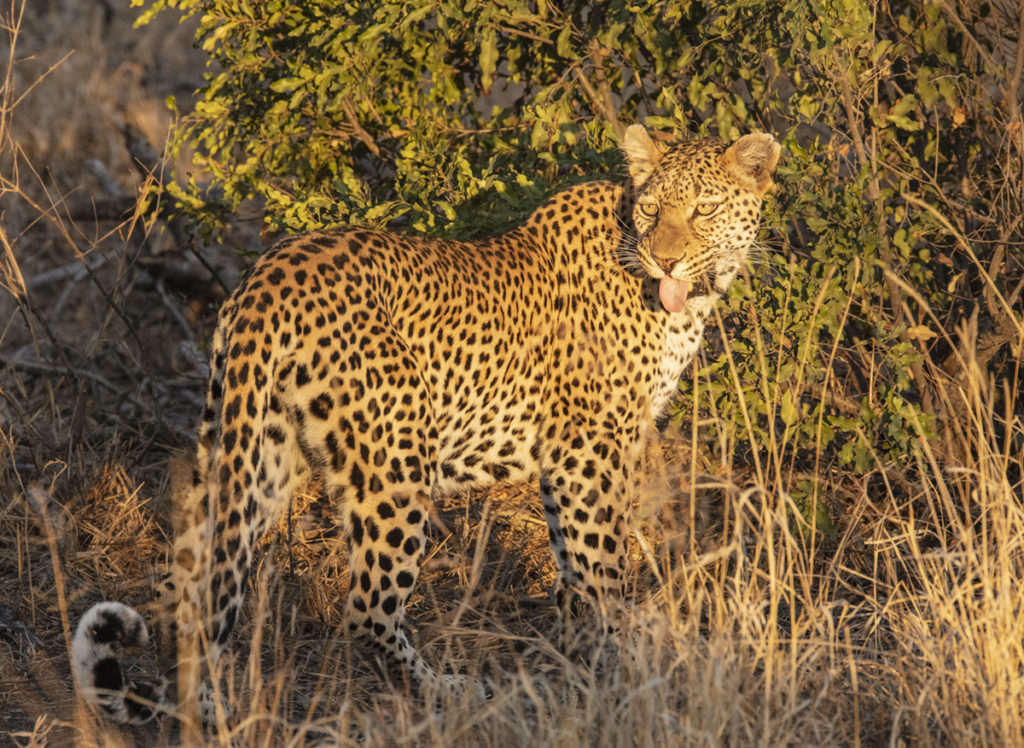
Female leopard in late afternoon, Kruger National Park
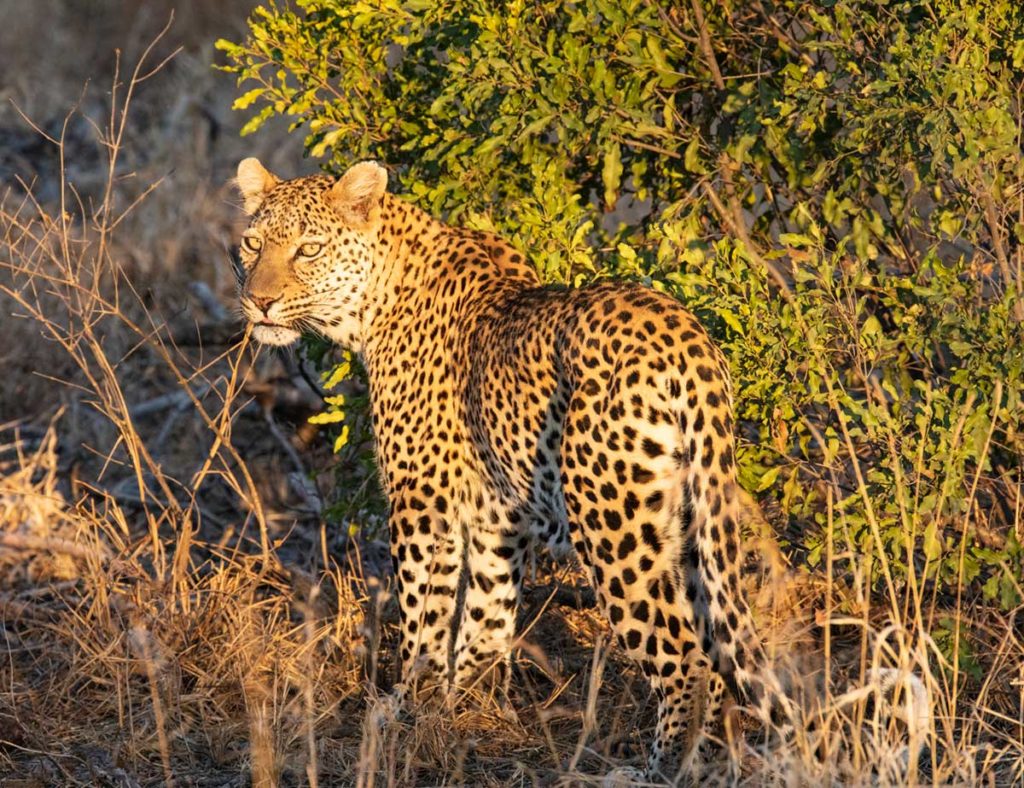
Female leopard in late afternoon, Kruger National Park
The next morning we came upon a pride of lions. There were four females lounging in the long yellow grass. As we were quietly parked watching the females, a male approached silently down a nearby hill, until we were between he and the group. We thought this was going to be a problem but he wandered off to the left and laid down under a bush, content to have us in their space. We were 10 feet from these lions as you get amazingly close on safari in Africa. I was sitting in the open front seat of the safari jeep at this time and later in the afternoon when we returned my husband sat in the front seat. We were the only ones with major camera equipment so our guide let us trade off. We were asked to be extremely quiet and to not move very much around them. These animals think of the safari jeep as one big animal but if you move or make too much noise it breaks the spell and they start to pay more attention to the individuals rather than the whole.
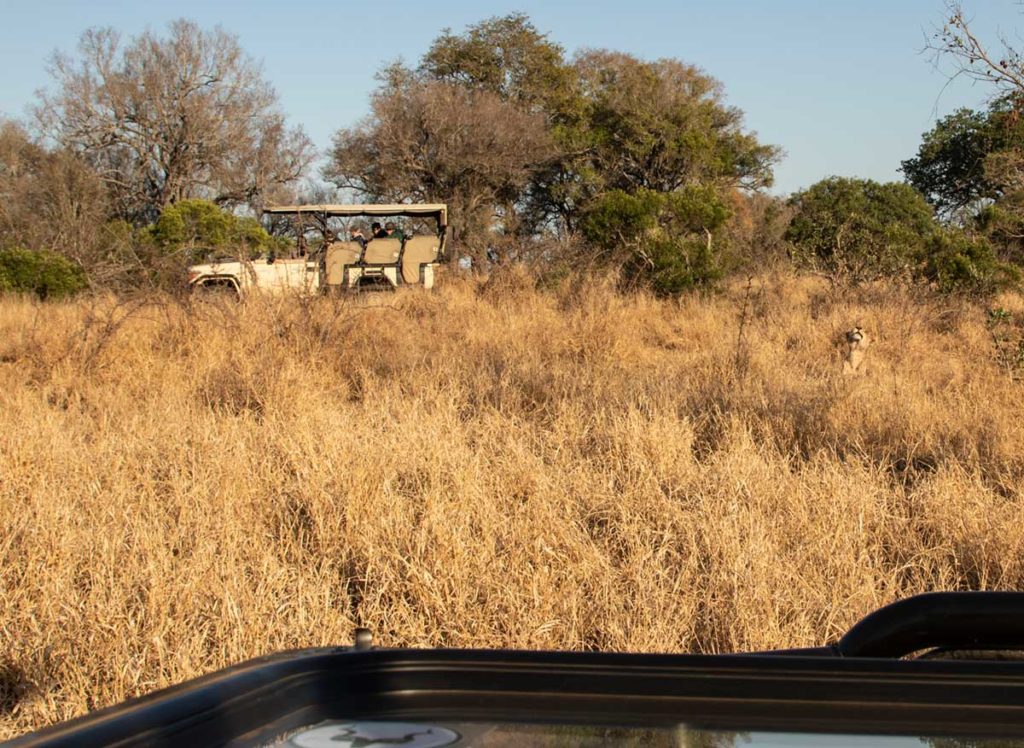
Safari jeeps near a lioness to the right.
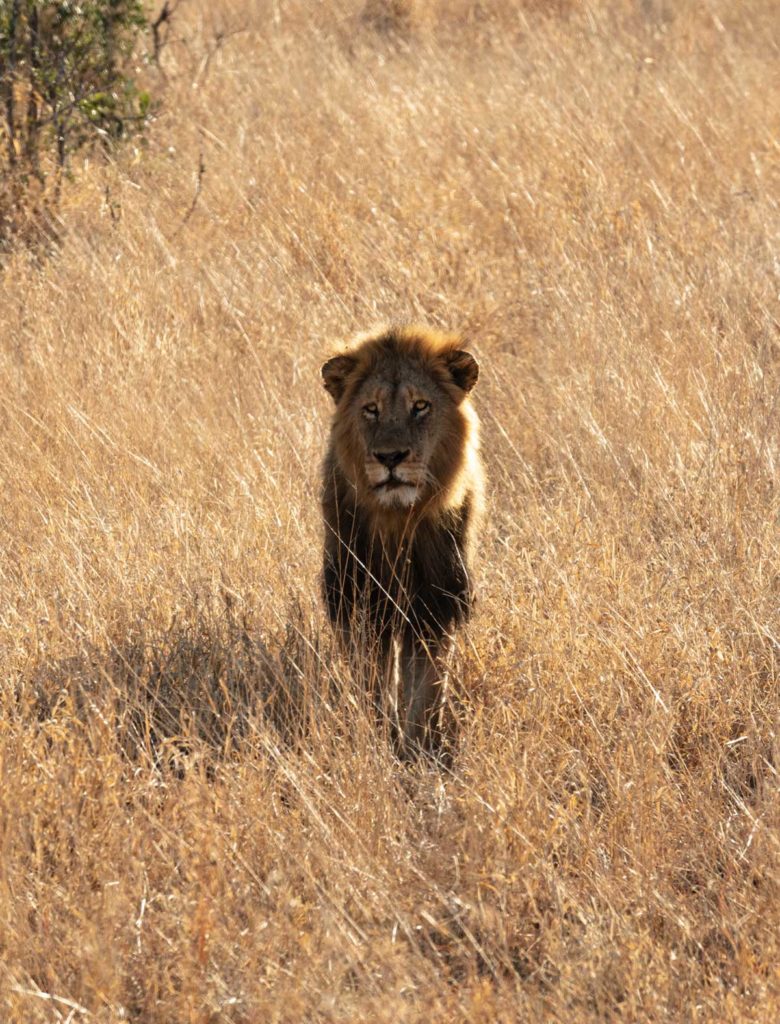
Male lion approaching us silently down a nearby hill, looking at his pride of 4 females.
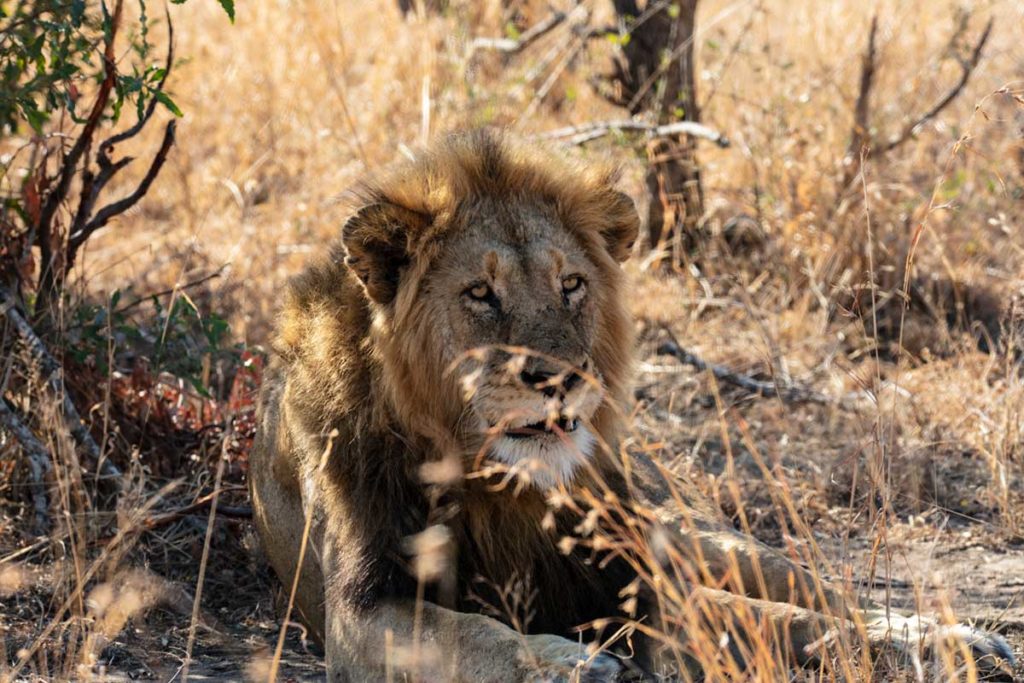
Male lion lying under the bush.
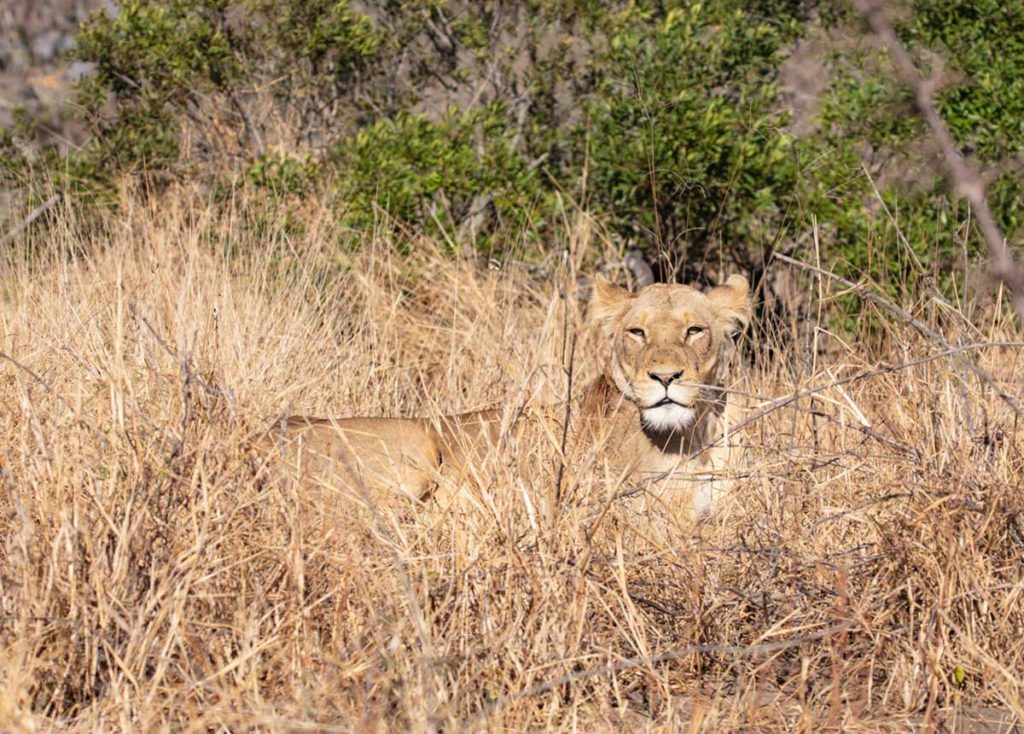
A perfectly camouflaged lioness.
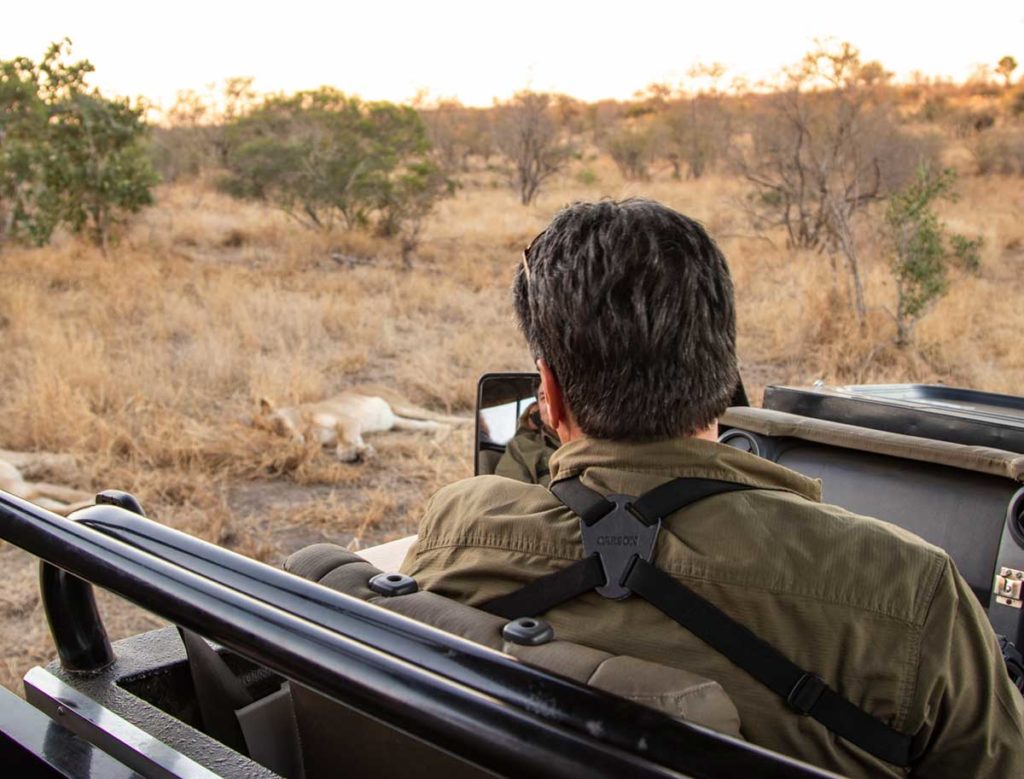
Tim watching lionesses warm themselves in the sun, me in the mirror.
While we were remarking at how well camouflaged these lionesses were in the long grass that perfectly matched their fur, a steenbok wandered right in front of one. The lioness stared at it, not quite believing her luck. She was a bit slow to respond and the steenbok’s incredible ability to jump and run meant she got away from that lion and two others that were laying nearby. We thought we were going to witness a sure kill but witnessed an uneventful chase instead.
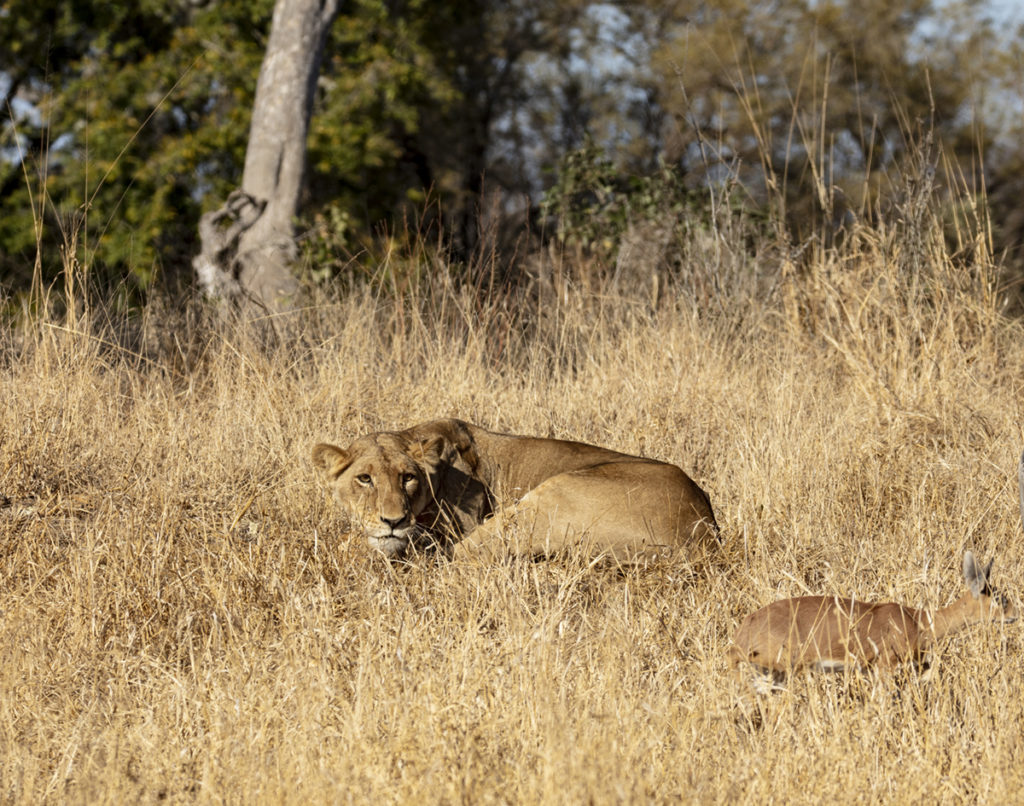
A lioness watching a steenbok run by, just before giving chase.
We were so happy to see these lions as lions are what you really go to see on safari while the other animals add to the experience. We were equally happy to see another leopard the next day, a male this time, who let us follow him a long way. I got some great shots of him with a telephoto lens, but we were so close that others got decent photos even with their cell phones.
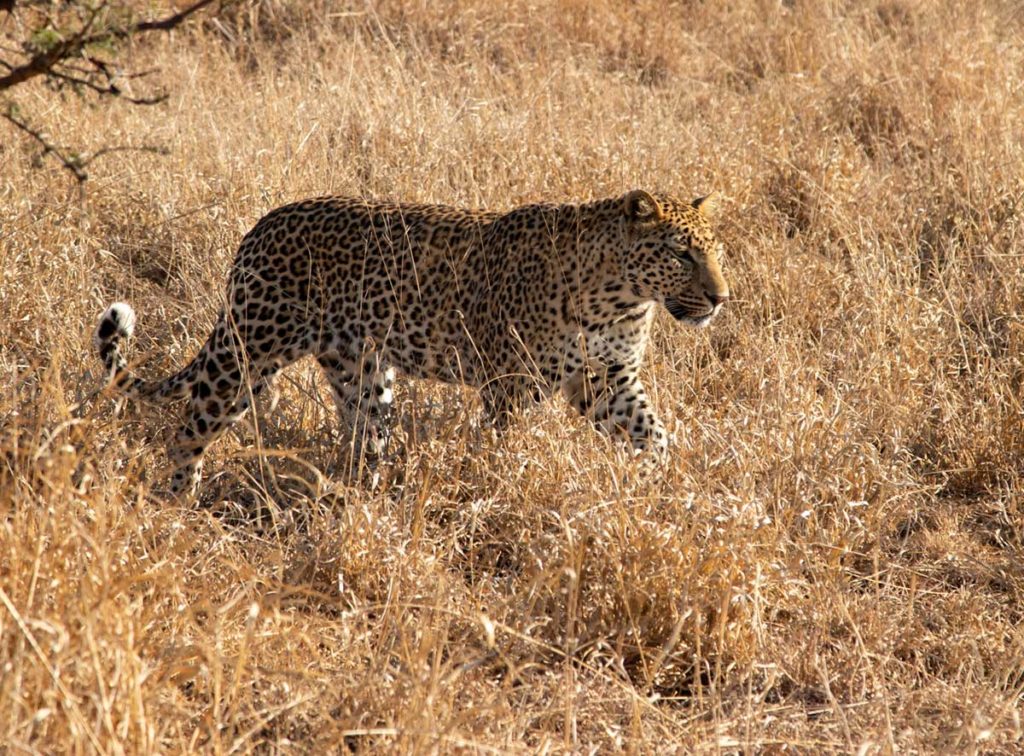
Male leopard walking in tall grass.
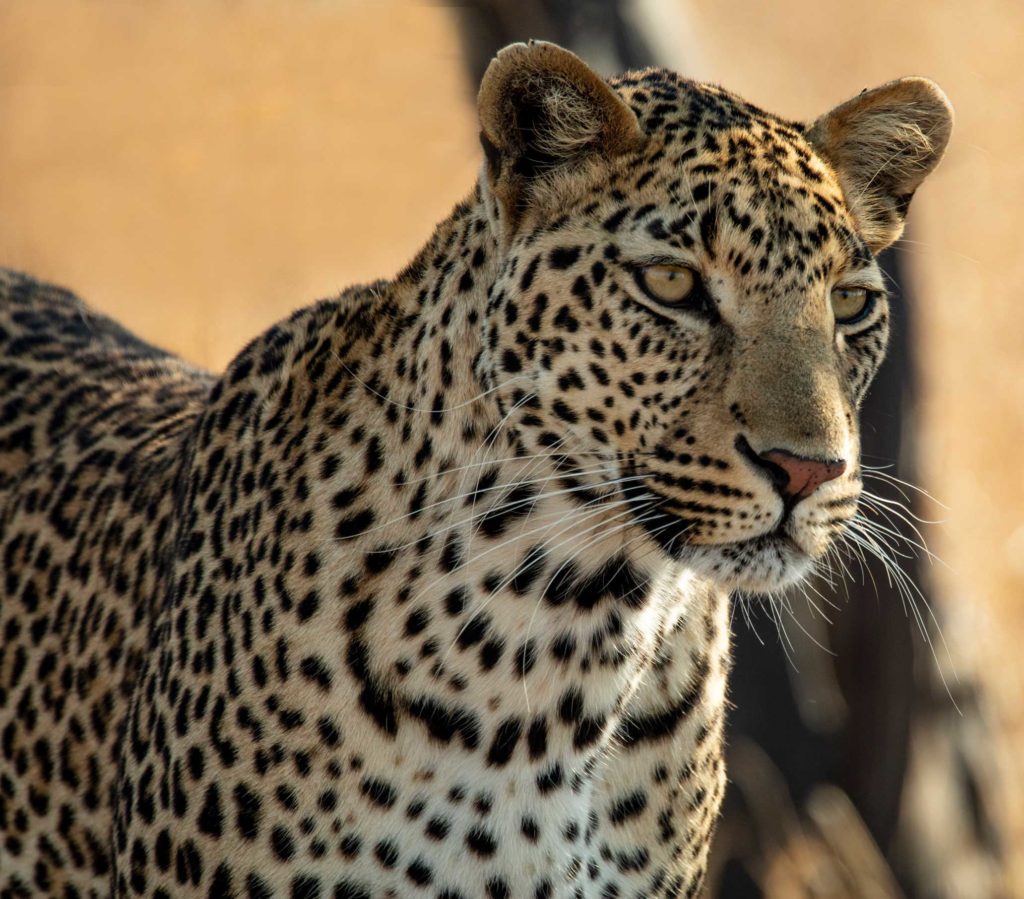
Male leopard hunts at midday in Kruger National Park, South Africa – photo by Diann Corbett Johnson
We saw rhinos twice – once at the edge of a field and as we approached they ran. Another time we came upon one in a dry river bed at another camp’s watering hole. Rhinos are still subject to poaching and because of this they were shy. Water buffalos, also widely available at the watering hole, were a frequent sight along with elephants. We saw a herd of about 500 African buffalo moving along near a main road of the park.
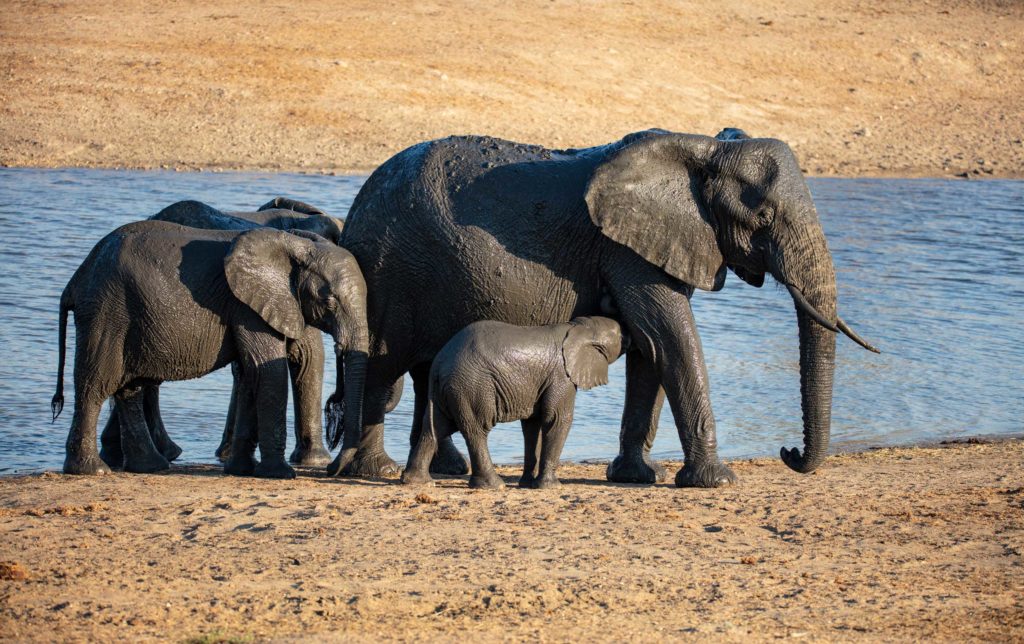
An elephant family at the watering hole in Kruger National Park, South Africa – photo by Diann Corbett Johnson

Elephants drinking water at a dam in Kruger National Park.

Rhino and African buffalo, Kruger National Park
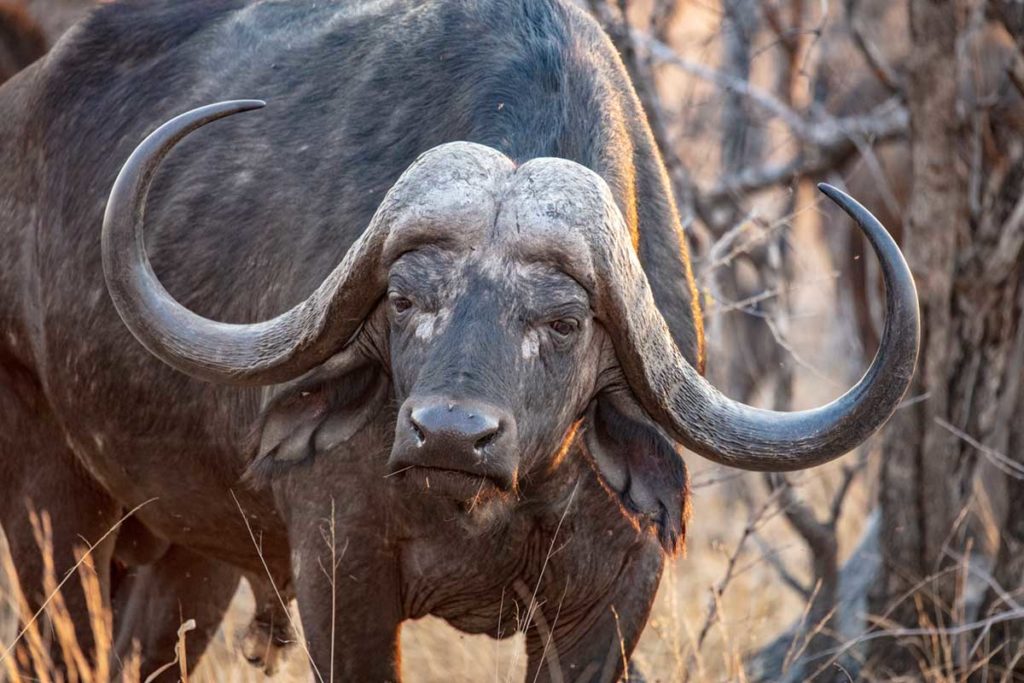
African buffalo, Kruger National Park
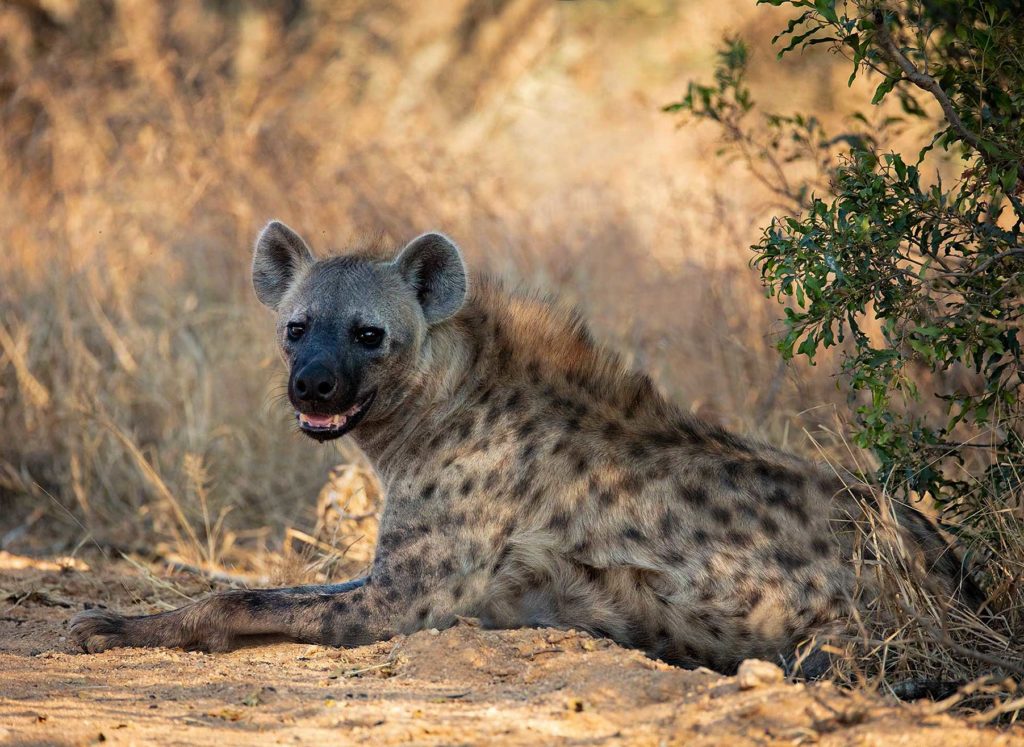
Hyena in Kruger National Park, South Africa – photo by Diann Corbett Johnson
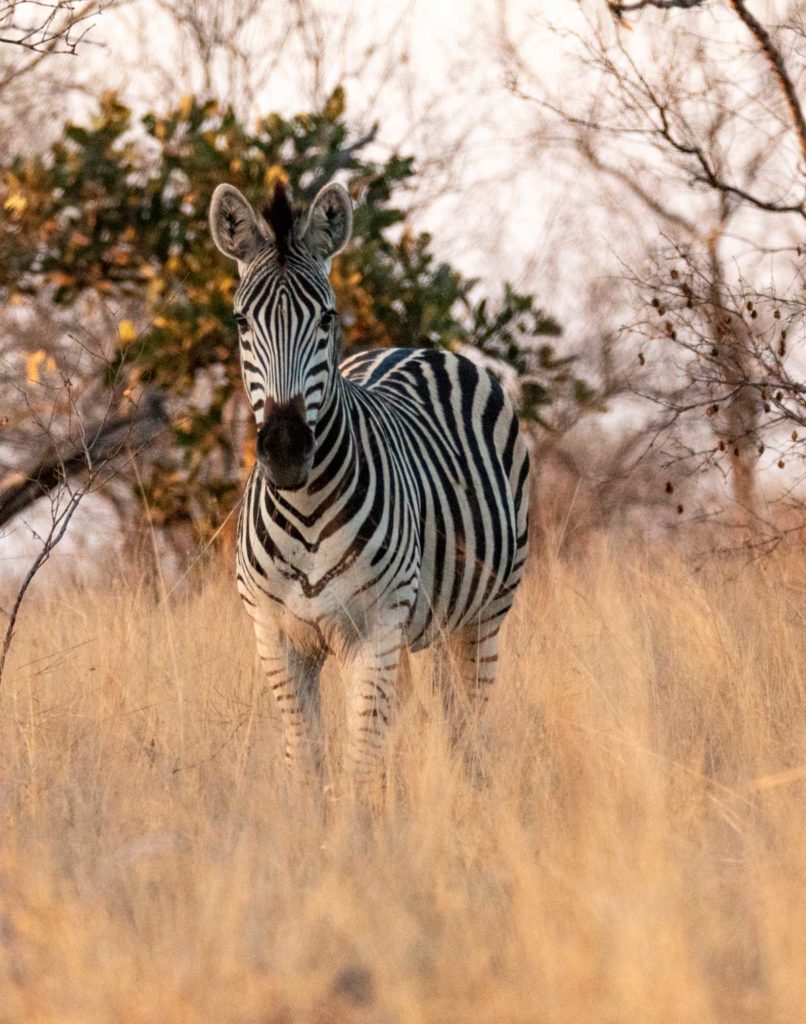
Zebra, Kruger National Park
Other unforgettable experiences were having our morning coffee and afternoon cocktails in the African bush during the game drives. While we had our refreshments we were told to keep watch for unexpected approaching animals. It constantly reminded you of the unpredictable nature of the place you were in. It is truly wild. Meals at the lodge were at an outdoor patio across from the watering hole. We really loved Imbali and would go back again.
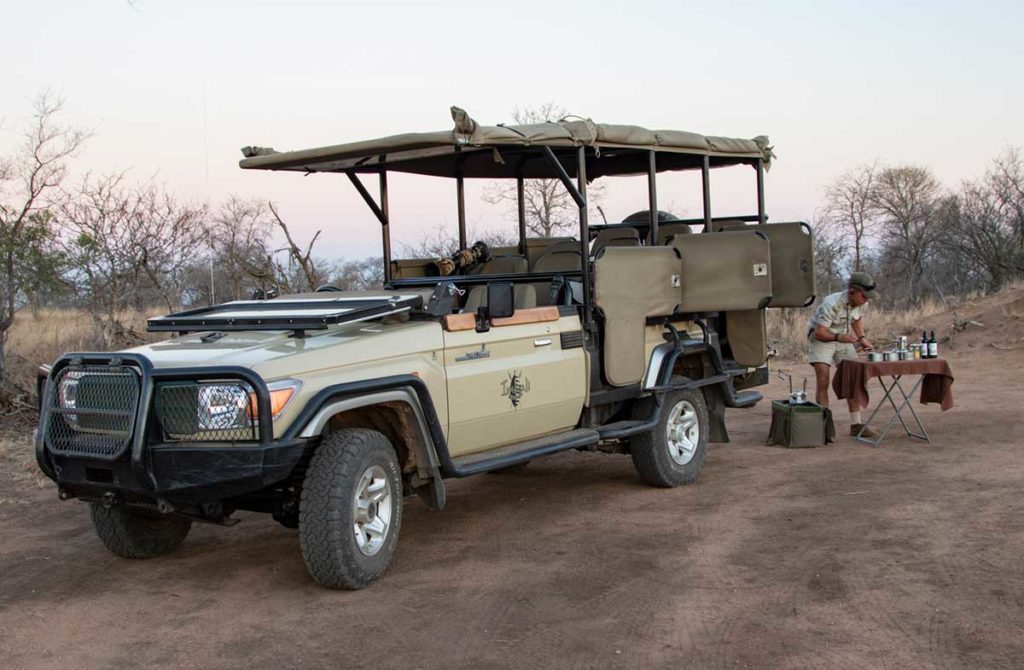
Our guide setting up the daily sundowners in the African bush.
As we have heard from others, we didn’t want to leave the day we were supposed to, but the South Africa trip had held some difficult, unexpected surprises I will write about in a future entry, so we were ready to go. On our way out we saw a Nile Crocodile and a few lions, along with the usual impala as we headed back out of Kruger on the long road to Johannesburg. We drove instead of taking a connecting flight because we were hauling so much photography gear we couldn’t make baggage weight limits on the smaller plane. We spent one night in the city before returning home.

Nile crocodile, Kruger National Park
Thinking back on the trip we can relate to Ernest Hemingway’s quote, as for some odd reason we keep ending up in places he loved such as Paris, Spain, Venice, Key West and Africa. We know we will be back to Africa some day. As they say, it gets in your soul.
“All I wanted to do was get back to Africa. We had not left it, yet, but when I would wake in the night I would lie, listening, homesick for it already.” Ernest Hemingway

Sunset in Africa.

